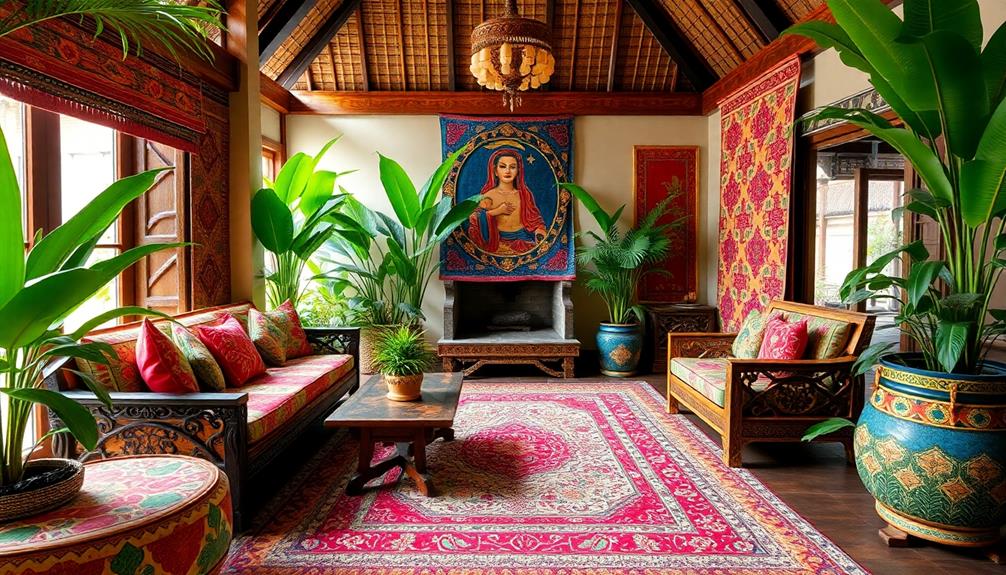Did you know companies lose over 25% of their productive capacity to organizational drag? This loss greatly affects their productivity and profit. Organizational drag, mainly from too much bureaucracy, costs the U.S. economy more than $3 trillion every year. It’s essential to change how we tackle problems and start making decisions quickly. Understanding bias to action is a critical part of this process.
Key Takeaways:
- Bias to action means preferring to act quickly rather than waiting.
- This bias leads to fast responses, being proactive, and making quick choices.
- But, it’s vital to think things through to avoid rushed decisions and bad results.
- Action bias is common in dynamic fields and under stress, like in business and investing.
- Knowing and managing your tendency to act fast is key for good decisions and better results.
By understanding and using bias to action, both people and companies can better handle challenges, grab opportunities, and succeed. Next, we’ll look more into the advantages and drawbacks of this bias, its role in investments, and how Amazon assesses it. Plus, we’ll examine ways to develop a bias to action in both individuals and teams. We will also explore the role of action bias in leadership and wrap up with essential tips for making smarter decisions.
The Pros and Cons of Bias to Action
Bias to action means acting quickly, but it has good and bad sides. Knowing them helps us decide when it’s useful. We’ll look at the pros and cons:
Advantages of Bias to Action
1. Swift Decision-Making: Quick decisions help tackle problems or grab chances fast. This is key in a speedy world.
2. Rapid Response: Bias to action leads to a do-it-now attitude. It helps people fix issues early. Being proactive can improve solving problems and adjusting to new situations.
3. Encourages Proactivity: This mindset makes people own their tasks and seek better ways. It sparks innovation and can set you apart in moving markets.
Disadvantages of Bias to Action
1. Hasty Decisions: Quick actions can sometimes mean not thinking things through. In complex times, swift moves might not be the best.
2. Potential Negative Outcomes: Moving too fast can end badly. Without careful planning, you might miss important details or chances to do better.
Finding the middle ground between quick actions and careful thinking is key. By weighing its pros and cons, we can make bias to action work for us without too much risk.
| Advantages of Bias to Action | Disadvantages of Bias to Action |
|---|---|
|
|
Balancing Action Bias with Deliberation
Achieving a more measured approach
The trick to managing action bias right is finding the sweet spot between action and thinking. Although a bias for action can spark major advances in healthcare tech, it also demands careful thought and risk checking. This makes sure we can keep growing without stumbling.
Healthcare groups must pause and think hard before deciding. This involves looking at all factors, the pros and cons, and other options. Being deliberate like this prevents rash decisions and fosters smarter, longer-term planning.
Good decision-making mixes quick action with deep thought. Critical thinking is key for looking at tricky problems, spotting issues, and figuring out the best steps to take. It’s about asking the tough questions, doubting what we assume to be true, and considering different viewpoints.
“Critical thinking is essential in striking a balance between action and deliberation. It allows us to assess risks, potential outcomes, and determine the best course of action.”
Risk checking is vital for balancing action bias. It’s about understanding what could go wrong, how likely that is, and what it might mean. This helps healthcare organizations avoid choices that could make things worse.
It’s also important to see the bigger picture. Quick actions are sometimes needed, but we must also think about how they fit with our future goals. This approach prevents short-term fixes that don’t help in the long run, ensuring actions help with growth and improvement.
Finding the right mix isn’t about stopping action; it’s about being smart and proactive. By thinking critically, evaluating risks, and planning for the future, healthcare organizations can make choices that lead to real, lasting betterment.
Real-World Example: Amazon’s Approach
Amazon loves to act quickly, always trying to innovate and focus on the customer. Yet, even amid their fast pace, they balance action with careful thought and risk checking.
“At Amazon, we are encouraged to question assumptions, challenge the status quo, and consider potential risks before taking action. This helps us make confident, data-driven decisions that align with our long-term goals.”
Amazon combines quick action with deep thinking and risk analysis. This has helped them innovate, face challenges, and grow over time.

Table: Key Recommendations for Balancing Action Bias with Deliberation
| Recommendation | Description |
|—————-|————-|
| Foster a culture of critical thinking | Encourage employees to ask questions, challenge assumptions, and consider diverse perspectives. |
| Incorporate systematic risk assessment | Develop processes to identify, evaluate, and mitigate potential risks associated with different actions. |
| Consider long-term implications | Align actions with long-term goals and strategic planning to ensure sustainable growth and improvement. |
| Encourage informed decision-making | Foster a data-driven decision-making culture that considers relevant information and insights. |
| Strike a balance | Find the right equilibrium between taking immediate action and pausing for thoughtful deliberation. |
By following these steps, healthcare organizations can handle the tricky balance of action and thought. Their decisions will be better informed, more strategic, and truly change-making.
Action Bias Within Investments
Many investors act impulsively due to fear of missing out or avoiding losses. This can lead to irrational decisions. It’s important to understand and manage this action bias to make better choices.
Investments move quickly, and the rush for quick profits can cloud rational thinking. Emotions can overpower logic, pushing toward poor decisions. Recognizing and controlling action bias is key to financial success.

People often change their investments too much because of fear of missing out. They think these frequent changes will bring higher returns. But this usually doesn’t work out.
Frequent trading often leads to missing good opportunities and achieving lower returns. For example, over 54% of active credit card holders carried a balance in early 2021. This shows how common action bias is in finance.
To avoid the pitfalls of action bias, investors should think more rationally. Avoiding hasty trades and focusing on long-term goals can prevent emotional mistakes. This way, they might do better financially.
Other biases like emotional, cognitive, and confirmation bias can also harm investment decisions. Knowing and fighting these biases helps in making smarter choices. Being informed leads to more objective and successful decisions.
Beating action bias means balancing the urge to act with the need for analysis. Resist making constant changes. Focus on research, careful thinking, and long-term strategies. This approach can lead to better investment results.
Action Bias at Amazon
Amazon is famous for its bias for action. It has a culture that loves rapid innovation and culture of moving fast. One of its 14 main rules is to act fast and start things quickly.
This bias for action means Amazon’s team should always be ready. They should try out new ideas and be okay with changes. They think it’s okay to make mistakes because you can often fix them. This idea supports taking smart risks.
People who get job offers from Amazon usually like this action rule. They talk about times they had to make quick choices due to sudden issues or chances.
Interviewing at Amazon
For Amazon interviews, be ready with stories for each leadership rule. Interviewers ask a few questions about these rules in each meeting. So, you might get several questions about the same rule.
They might ask about risks you’ve taken or fast decisions you’ve made. Questions could also touch on how you handle not having all the info or dealing with problems.
To get ready for these chats, prepare answers that fit different rules. This way, you’re set for any question on the same topic.

The bias for action is key at Amazon. It’s all about making quick business choices, being brave to take risks, and being decisive, even when things aren’t clear.
Benefits of Bias for Action in the Workplace
Adopting a bias for action at work leads to greater success and productivity. People or teams who act quickly and decisively tend to perform better. They also bring more innovation to their organizations.
This bias eliminates unnecessary delays caused by too much planning and red tape. It makes companies faster and more efficient. With this culture, employees can grab opportunities quickly.
Companies that prefer to act swiftly see many advantages. They adapt to changes faster and keep meetings focused. Employees feel confident to try new things. This always helps in reaching goals.
Bias for action also means continuous improvement. It makes employees proactive and open to learning from experience. This kind of environment helps everyone to think deeply and take responsibility for their tasks. It leads to happier employees and a stronger team spirit.
A study by McKinsey Global found only 20% felt their companies made decisions well. But, with a bias for action, firms do better. They know how to assign tasks and invest in the right projects. They also stick by their decisions, which helps them grow.
Quick decision-making also builds an energized workplace. Such a culture draws in hard-working staff. It prepares the company to face an ever-changing business world confidently.

Developing Bias for Action in Yourself
To develop a bias for action, start by taking small risks. It’s key to move beyond overthinking. Trust yourself, use what you know, and be brave to risk. Stepping beyond your comfort zone opens up chances for big wins.
It’s essential to keep your eyes on the goal. Our world is full of distractions that can off track us. By staying focused and ignoring these distractions, you become more efficient and productive.
Learning by doing is crucial for action. Remember, failure is just a step towards growth. With every action, learning from both victories and setbacks, you get better and sharper.
Using a relative value system helps judge your steps more fairly. It sets clear rules for making bold moves. This way, you’re less swayed by unfair judgments and more focused on strong, decided actions.
At its heart, developing a bias for action means being eager to start, daring in your actions, and open to risks. It’s about shifting towards embracing the unknown and actively going after what you want. With each small step, risk-taking, staying focused, and learning from experiences, you’re more likely to achieve your dreams.
Key Takeaways:
- Take small steps and embrace risk to develop a bias for action.
- Avoid distractions and stay focused on the task at hand.
- Learn from both successes and failures to continuously improve.
- Implement a relative value system to mitigate perception of subjective grading.
- Developing a bias for action involves taking initiative, acting boldly, and accepting risk.

| Benefits of Developing Bias for Action: |
|---|
| Higher growth rates and returns compared to slower peers |
| Improved decision-making quality and speed |
| Unlocking new opportunities through calculated risk-taking |
| Increased efficiency and productivity by avoiding distractions |
| Continuous personal and professional growth through learning by doing |
Developing Bias for Action in Your Team
Success comes to those teams that act decisively. Teams that make fast, quality decisions often do better than their rivals, says McKinsey. Wondering how to make your team more decisive and action-oriented?
Simplifying the Decision-Making Process
Making it easier to decide things is key. Cut down on the red tape and steps that slow things down. Urge your team members to own their choices and trust their instincts. This way, they can make quick, smart decisions that push the team forward.
Building Trust
Trust is crucial in any winning team. Teammates that trust each other take risks and decide with confidence. Build trust through open talks, listening well, and supporting each other. This creates a place where everyone feels okay to share and suggest.
Setting Clear Deadlines
Deadlines help keep the team focused. When you set achievable deadlines, everyone knows what’s expected. This let’s the team organize their work better. But, it’s vital to find a balance to avoid rushing or team burnout.
Breaking Down Goals into Milestones
Big goals can feel daunting. Making them into smaller parts keeps everyone going and motivated. Celebrating small wins along the way boosts morale. It keeps the team ready to act and move forward.

To sum it up, urge your team to act by making decisions simpler, building trust, setting clear goals, and breaking them into parts. When teams feel supported and clear about what to do, they’re more likely to act confidently and achieve great stuff. Let’s get your team moving!
Importance of Bias for Action in Leadership
Leadership is more than making decisions. It’s about moving forward, grabbing opportunities, and creating a growth culture. In today’s fast business world, acting quickly is key for leaders.
Organizations with a bias for action make decisions fast. They focus on doing rather than overthinking, aiming for progress over perfection. This lets them jump on opportunities and push their teams ahead.
A bias for action means leaders embrace new ideas and big changes. They see failure as part of success and are willing to risk. This mindset encourages growth and learning.
McKinsey’s studies show quick decisions are often good ones. It shows leaders can act fast without losing decision quality. Companies acting swiftly tend to grow faster and do better financially than those moving slowly.
Developing Bias for Action in Leadership
Industry giants like Amazon see the value in acting quickly. Dan Rose learned from Jeff Bezos how vital fast decision-making is. It’s been crucial to their success over 20 years.
Tom Peters, who wrote “In Search of Excellence,” believes quick action is key to business success. He says it’s more important now than back in 1977 when his book came out.
Proactive leaders prepare for challenges and find ways to tackle them. They talk about problems and see failure as a learning step. They adjust their plans as needed without fear.
Clear communication is another part of acting swiftly. Leaders who are open about goals and updates keep their teams focused. Everyone knows what to do, which boosts action.
Teams led by action-driven leaders have a unique energy. This vibe helps everyone achieve more and promotes a culture of getting things done.
| Benefits of Bias for Action in Leadership: |
|---|
| Seizing opportunities |
| Making decisive decisions |
| Encouraging experimentation and growth |

Adding a bias for action doesn’t cost much. It’s about changing how leaders think and act. With this change, leaders can guide their teams to success in today’s competitive market.
How Bias for Action Is Evaluated at Amazon Interviews
Amazon puts a big focus on bias for action when evaluating candidates. This leadership principle is about making decisions quickly and acting on them without too much analysis. During interviews, Amazon looks at how well candidates can take quick action and make decisions.
A typical question at Amazon interviews asks candidates to talk about a time they made a big decision without asking their manager first. This shows if they can act on their own, think on their feet, and take smart risks for good results.
In their answers, candidates need to explain how they made their decision safe. They should talk about lowering risks and making things better. They should also mention working with others to come up with new solutions.
Amazon interviewers check if candidates can quickly take action and make smart decisions. They look at how candidates solve problems and the results of their actions.
Amazon also wants to see if candidates look for ways to improve things, work well with others, and innovate. They value people who don’t just act fast but also seek to make things better.
Evaluation Criteria for Bias for Action at Amazon Interviews
| Evaluation Criteria | Description |
|---|---|
| Ability to Make Reversible Decisions | Demonstration of the understanding that many decisions can be reversed and do not require extensive analysis |
| Risk Management Skills | Capability to take calculated risks while considering potential pitfalls and developing strategies to mitigate them |
| Process Improvement Initiatives | Evidence of actively seeking opportunities to improve existing processes and drive innovation |
| Collaborative Problem-Solving Approaches | Ability to work effectively with teammates to identify and solve problems in a collaborative manner |
The table shows the main things Amazon looks for in bias for action interviews. They assess skills in making changeable decisions, risk management, improving processes, and team problem-solving. These skills help Amazon find people who fit their action-oriented culture and drive success.
Bias for action is key in Amazon’s interview process. It’s crucial for finding candidates who can make quick decisions and help the company grow. Amazon seeks people who fit into this dynamic and goal-focused environment.

Conclusion
In conclusion, taking action is vital when making decisions. It’s important not to be too careful. Yet, balanced decision-making is key, along with understanding the risks of quick choices. Embracing this approach brings many benefits.
Statistics show that companies making informed choices through experimentation or customer engagement see better results. Teams that prefer taking action see boosts in productivity and the value they deliver.
To develop a bias for action, it’s about starting with small steps and being open to risks. It means staying focused and learning through action. Cultivating a culture that encourages this mindset is essential. This way, both individuals and organizations can make smarter, more effective decisions for superior outcomes.









